Energy star rating
If you are planning to build a new building or undertake a major extension and alteration, then you will need to obtain an energy compliance report/certificate for your building permit application. Nationwide House Energy Rating Scheme (NatHERS) assessment (star rating) is one of the common avenues to satisfy the minimum energy efficiency requirements of the National Construction Code (NCC). Navigate through this page for more:
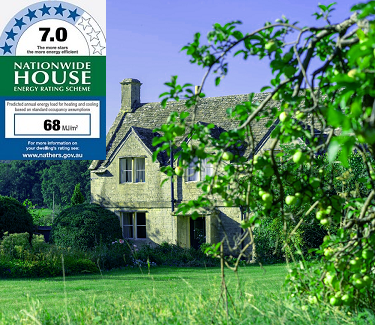
At Energy Compliance, we offer all avenues to demonstrate your building compliance under any conditions.

Quality
We perform more iterations to reduce your construction costs.
We illustrate the added insulation to minimize any mistakes during the construction stage.

Quality
We perform more iterations to reduce your construction costs.
We illustrate the added insulation to minimize any mistakes during the construction stage.

Service Guarantee
If we can’t reduce your construction cost by more than our fee, we’ll only charge our 40% deposit. This is the best proof of how cost-efficient our performance-based solutions are. You won’t get this anywhere else!

Quick Turnaround
Quotations: Same business day of inquiry.
6-Star reports: 2-3 business days.

Quick Turnaround
Quotations: Same business day of inquiry.
6-Star reports: 2-3 business days.
What is a 6-star Rating? When will I need it?
Energy rating or NatHERS rating involves using a simple software to model a house in 2D and apply insulation values close to the minimum requirements of the NCC to calculate the amount of heating/cooling your house/apartment demands to stay energy efficient. The energy demand of the building is then converted into a star rating between 0 and 10 stars. If your house/apartment achieves 6 stars or more, then you get an energy compliance certificate. Star allocations may also be used for ESD reports where council asks you to obtain BESS best practice in Victoria. Also, for an alteration/addition to a building with an existing Star Rating, another assessment needs to be made where details are explained here.
What do the energy rating stars mean?
The Housing Industry Association estimates that almost 71% of residential buildings use star rating as a way to demonstrate energy efficiency compliance [reference]. A higher star rating means that the house requires less artificial or active heating and cooling. The highest star rating of all is a 10-star rating.
What building classes need an energy rating?
A building that doesn’t require a building permit also doesn’t need to comply with energy efficiency requirements (i.e. doesn’t require a star rating or any other method of energy compliance). NatHERS energy rating can be used for demonstrating energy compliance for all residential dwelling such as:
A 0-star house means the building fabric does nothing to maintain comfort levels inside the house
A 5-star house is the thermal comfort level you feel in houses built 2005 to 2011 in Victoria.
A 6-star house is the minimum level of compliance as per National Construction Code*.
A 10-star house is a 100% passive house with absolutely no artificial heating and cooling to keep the house temperature and humidity at comfort levels.
Class 1a dwelling: detached house or one of a group of attached dwellings including row house, terrace house, townhouse or villa unit.
Class 2 buildings: an apartment building (multi-residential) containing two or more sole occupancy units. In the case of a multi-residential, the whole building collectively (not each unit) must achieve a 6-star average (each being 5-star minimum).
Class 4 part of a building: a sole residential dwelling inside a non-residential building.
*According to VBA, 6-star houses are projected to use 24% less energy for heating & cooling compared to 5-star houses.
Star rating scheme doesn’t cover Class 1b buildings, For more information on building classes, click here.
What do the energy rating stars represent?
The Housing Industry Association estimates that almost 71% of residential buildings use star rating as a way to demonstrate energy efficiency compliance [reference]. A higher star rating means that the house requires less artificial or active heating and cooling.
A 0-star house means the building fabric does nothing to maintain comfort levels inside the house
A 5-star house is the thermal comfort level you feel in houses built 2005 to 2011 in Victoria.
A 6-star house is the minimum level of compliance as per National Construction Code*.
A 10-star house is a 100% passive house with absolutely no artificial heating and cooling to keep the house temperature and humidity at comfort levels.
*According to VBA, 6-star houses are projected to use 24% less energy for heating & cooling compared to 5-star houses.
What building classes need an energy rating?
A building that doesn’t require a building permit also doesn’t need to comply with energy efficiency requirements (i.e. doesn’t require a star rating or any other method of energy compliance). NatHERS energy rating can be used for demonstrating energy compliance for all residential dwelling such as:
Class 1a dwelling: detached house or one of a group of attached dwellings including row house, terrace house, townhouse or villa unit.
Class 2 buildings: an apartment building (multi-residential) containing two or more sole occupancy units. In the case of a multi-residential, the whole building collectively (not each unit) must achieve a 6-star average (each being 5-star minimum).
Class 4 part of a building: a sole residential dwelling inside a non-residential building.
Star rating scheme doesn’t cover Class 1b buildings, For more information on building classes, click here.
What are the PROS and CONS of Star Rating approach?



How do I get a 6-star energy rating in Victoria?
Getting a 6-star energy rating in Victoria depends on your house design, obviously. The table on the left describes the minimum thermal performance requirements for your house to comply with the National Construction Code (NCC) energy efficiency provisions. However, having these minimum thermal performance requirements will not grant you a 6-star rating. For this to happen, your house design must be similar to a standard house design (in the eyes of the NCC) as much as possible. Some of the standard house design characteristics (as obtained from the NCC) is described below:
1- Floor type: concrete slab on ground
2- Ceiling type: flat
3- Ceiling height: 2.4m
4- Pitched roof: not more than 23 degrees
5- Roof lights: no roof lights
6- Window area: not more than 10% of the floor area of the room served.
7- Wall type: no lightweight walls
The more different your home design is from the standard home design above, the less likely for it to comply with the code, having thermal performance as described in the left-hand table. This means you will need to add more insulation to the roof, floor and walls and also have windows with low U-values to obtain the same energy efficiency as the standard house. Ultimately, some complex or luxurious designs may even fail to obtain a 6-star rating with a meaningful window U-values. in these situations, VURB is an alternative pathway that can serve as a tool to maintain construction costs while preserving the energy efficiency of the house. More on that is described below.
| Climate zone | 6 | 7 |
|---|---|---|
| Major city | Melbourne | Hobart |
| Roof | R5.1 (solar absorptance >0.4) R4.6 (solar absorptance <0.4) |
R5.1 (solar absorptance >0.4) R4.6 (solar absorptance <0.4) |
| Roof solar absorptance | See above | See above |
| External walls | R2.8 | R2.8 |
| Wall solar absorptance | No requirement | No requirement |
| Glazing U-value & SHGC |
from ABCB Glazing Calculator | from ABCB Glazing Calculator |
| Roof lights U-value |
Depends on shaft index – U3.4 to U8.5 | Depends on shaft index – U3.4 to U8.5 |
| Roof lights SHGC |
Depends on shaft index – 0.34 to 0.83 | Depends on shaft index – 0.34 to 0.83 |
| External shading | No limit | No limit |
| Concrete slab on ground (no slab heating) |
No requirement | No requirement |
| External floor | R2.25 | R2.75 |
What are the alternatives to star rating?
Considering the pros and Cons of star rating, it is worthwhile to consider all other options available for a residential building energy compliance. These are:

Elemental Provisions or DtS (Deemed to Satisfy method)
This is a low cost and least time-consuming compliance method. The Deemed to Satisfy (DTS) report provides a list of minimum prescriptive insulation values and thermal performance requirements to meet the National Construction Code (NCC).
DTS compliance is fast (we can do it in a single day), low cost, and simple. The disadvantage is that the solutions based on DtS are limited and may not be suitable for your architectural design, also it could be expensive to construct.
This option is recommended for small and simple buildings with small glazing area and we always try it first. Note that this option is rigid and doesn’t allow a trade-off between different building fabric insulation or glazing.
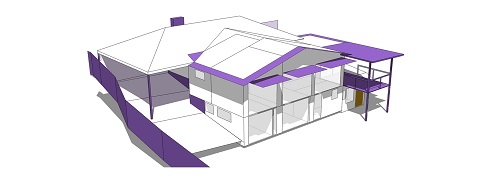
Verification Using Reference Building (VURB)
This is the ultimate energy compliance avenue. It involves modelling your building and modelling a similar house based on minimum energy efficiency requirements (i.e. elemental provisions). It eliminates all the cons of NatHERS energy rating and allows for more accurate thermal energy modelling of your house. The main advantage of this approach compared to the star rating approach is that this option may allow you to save more construction costs.
This option is highly recommended for high-end houses with large glazing area. This option allows for a trade-off between different building fabric insulation and glazing thermal performance to meet NCC Performance Requirements. This option proved to work even for the most costly-to-construct houses.
Elemental Provisions or DtS (Deemed to Satisfy method)
This is a low cost and least time-consuming compliance method. The Deemed to Satisfy (DTS) report provides a list of minimum prescriptive insulation values and thermal performance requirements to meet the National Construction Code (NCC).
DTS compliance is fast (we can do it in a single day), low cost, and simple. The disadvantage is that the solutions based on DtS are limited and may not be suitable for your architectural design, also it could be expensive to construct.
This option is recommended for small and simple buildings with small glazing area and we always try it first. Note that this option is rigid and doesn’t allow a trade-off between different building fabric insulation or glazing.
This is the ultimate energy compliance avenue. It involves modelling your building and modelling a similar house based on minimum energy efficiency requirements (i.e. elemental provisions). It eliminates all the cons of NatHERS energy rating and allows for more accurate thermal energy modelling of your house. The main advantage of this approach compared to the star rating approach is that this option may allow you to save more construction costs.
This option is highly recommended for high-end houses with large glazing area. This option allows for a trade-off between different building fabric insulation and glazing thermal performance to meet NCC Performance Requirements. This option proved to work even for the most costly-to-construct houses.
More on Star Rating
What is NatHERS?
The Nationwide House Energy Rating Scheme (NatHERS) was first announced in 1993. NatHERS is a system that rates dwellings and apartment buildings based on their energy efficiency and thermal performance.
House energy rating is generated by a NatHERS accredited software tool and is undertaken by a NatHERS assessor. NatHERS is by far the most attractive pathway to obtain residential energy compliance.
What are the steps of NatHERS energy star rating?
your assessor will need a plan view, elevation views, section cuts, glazing schedule and building fabric materials to start the energy rating process.
The geometry of the building is modelled in a plan view (two-dimension) and each room is assigned as an individual zone.
Building fabric & glazing thermal performance, internal gains, condition type, temperature set point and their schedules are assigned to the model.
The model is run and several iterations may be needed to reach the desired results. Then the stars are generated and the report is ready.
How long does it take to finalize a NatHERS energy rating report?
For a medium-sized house (approximately 160m2), it will take us 2 to 3 days to finish the energy star rating report. The degree of complexity of the building’s geometry and its features is a determining factor in the final star rating project deadlines.
How much does it cost to get a 6-star energy certificate?
This depends on the size and complexity of the building. Multiple types of windows, cathedral roofs, uneven floor levels, and multiple adjacent shading elements on the building, adds to the complexity of the work. Contact us, and one of our team members will usually respond in less than 1 hour.
Where can you find further information?
If you have further questions about 6-Star or other options for energy compliance of your building, refer to the following links or contact us.
PDF – Victorian Building Authority 6 star fact sheet.
PDF – Victorian Building Authority Practice Note 55.
Our past projects
At Energy Compliance we have broad experience in Residential – Mixed Use and commercial projects. Here are some of our NatHERS rating projects. See our Projects webpage for more projects.
-

Gordon – NatHERS rating and Performance Solution (VURB) -
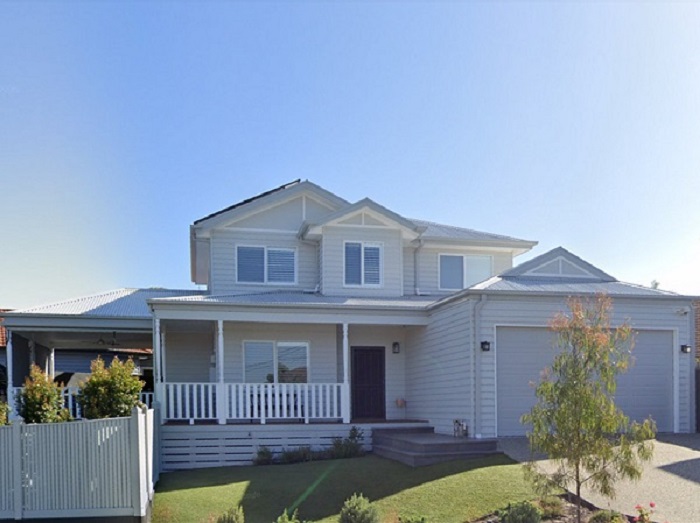
Ashwood- NatHERS rating -
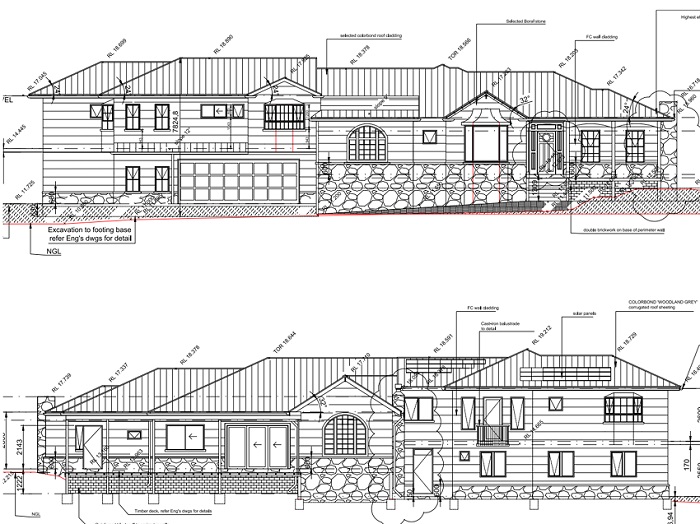
Park Orchards- NatHERS rating
See above that Gordon house has also required a VURB Performance Solution! Sometimes, some high-end houses with large glazing to floor rations could be very expensive to build even using the NatHERS 6 star rating. The Last resort in these cases will be Verification Using Defence Building (VURB) under NCC. This is another service that we offer at Energy compliance consultants.
Which factors would help to obtain a 6-star energy rating?
When a house, as currently designed doesn’t meet the minimum 6 star rating or some thermal measures are too expensive to install/construct, there are quite a few solutions to improve the energy efficiency cost-effectively.
National Construction Code (NCC) recognizes 8 climate zones in Australia. These climate zones vary from hot humid climate (Zone 1) to Alpine areas cold climate (zone 8). Some of the following strategies apply to all climates and there are also some climate-specific strategies.
Each house might perform differently depending on its climate and micro-climate zone, neighbouring building and shading from adjacent objects. It is highly recommended to get your energy assessor involved from the early stages so that they can work with your architect to quantify the impact of different measures on the overall house heating and cooling performance.
Common strategies for all climates
- Insulate ceilings and walls.
- Use appropriate shading for glazing.
- Minimize west and east-facing glazing or use adjustable shading devices to adjust the level of heat gains from the sun.
- Weather seal all external windows and doors.
- Use appropriate openings (windows and doors) for cross ventilation and passive cooling.
There are unlimited climate and micro-climate strategies that require different energy measures. Here, we classify it into two major strategies.
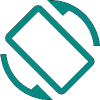
Orientation
For heating dominant houses, choose a house orientation to take advantage of solar energy. This can inherently add 1 star to your building. For heating dominant houses, the long face of the house should be aligned to the north as solar gain in winter can offset building’s demand for artificial heating.
For cooling dominant houses, choose a house orientation to restrict solar energy gain on east and west facades. This can inherently add 1 star to your building. For cooling dominant houses, the long face of the house should be aligned to the north and minimum wall-glazing areas must be aligned to the east or west.
 Layout
Layout
For a heating dominant house, spaces used during the day should be arranged to benefit the most from daytime passive heating from the sun. It’s best to arrange daytime zones in a layout for them to have a large wall-glazing area facing north.
For a cooling dominant house, spaces used during the day should be arranged to have minimum wall-glazing to the east or west. Also, It’s best to arrange night time zones to face east/west and daytime zones to face north/south.
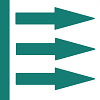
Thermal mass
For heating dominant houses, maximize thermal mass where solar heat can be absorbed on the north side of the house. There is not much benefit in adding thermal mass to areas with limited or no solar access.
For cooling dominant houses, minimize thermal mass where solar heat is intense (i.e. east/west facades). Generally, there is not much benefit in having construction materials with high thermal mass in hot climates.
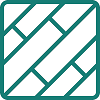
Floor
For heating dominant houses, it’s best to have a concrete slab as a floor construction. Stored heat inside the ground is beneficial to offset heating demand in winter. In the case of a suspended timber floor, it’s better to add thick insulation.
For cooling dominant houses, It’s best to have a concrete slab as a floor construction. Summer heat gains, as well as internal heat gains, can be transferred to the cool slab below. In the case of a suspended timber floor, it’s better to add insulation (not so thick).

Insulation
For heating dominant houses, increase insulation values to more than minimum requirements. Glazing is one of the biggest costs in energy efficiency measure and moderate to high insulation levels helps to reduce costs. Add less insulation to the walls with high thermal masses facing north.
For cooling dominant houses, adding high insulation to the walls may fail the building to transfer its internally generated heat so It’s better to add moderate insulation. Reflective insulation is one of the best ways of insulating roofs and walls facing east/west.

Albedo
For heating dominant houses, maximize solar absorptance of external surfaces (e.g. roof and walls). Its also best to increase the reflectivity of decks or other surroundings of the house. Metal roofs with solar absorptance values of more than 0.7 (e.g. Monument) are preferred for the purpose of solar heat gain.
For cooling dominant houses, minimize solar absorptance of external surfaces (e.g. roof and walls). Its also best to increase the solar absorptance of decks or other surroundings of the house. Metal roofs with solar absorptance values of less than 0.45 (e.g. Surfmist) are preferred for the purpose of solar heat restriction.

Glazing
For heating dominant houses, try to offset heating demand by allowing more solar radiation to the house. Glazing with higher values of solar heat gain coefficient (SHGC) may assist the building in demonstrating compliance with the NCC. This is especially the case for north-facing windows. It’s always better to avoid or minimize shading to the north-facing windows.
For cooling dominant houses, try to offset cooling demand by allowing less solar radiation to the house, especially east-facing and west-facing windows. Apply shutter blinds or adjustable shading devices to these windows. Avoid skylights where possible or decrease its SHGC, try and use north-facing dormers instead (where possible). It’s better for the energy use that the skylights face south.

Shading
For heating dominant houses, minimize shading to the north-facing windows and walls. It’s wise to use adjustable shading instead of permanent shading to the east-facing or west-facing windows. Optimize shading height and projection to the east/west-facing windows to minimize glare and cooling demand and maximize winter solar gains.
For cooling dominant houses, maximize shading on all east or west-facing windows. It’s better to use high shading with short projection to the north-facing windows and low shading with long projection to the east/west-facing windows. Shading to the northern windows shall be optimized to restrict solar gains in summer and allow it in winter.

Air movement
For heating dominant houses, the building must be well-sealed, that’s because infiltration is one of the major causes of heat loss in cold climates. Try to have enough ventilation areas (5-10% of habitable spaces floor area) that allow for good air movement during summertime.
For cooling dominant houses, allow enough ventilation openings to habitable rooms. This allows a breezeway to form between one window in a room to another window in another room. Introducing natural ventilation is an effective way of reducing artificial cooling energy demand.
TIPS for a 6 star rating and an optimized house thermal performance
When a house, as currently designed doesn’t meet the minimum 6 star rating or some thermal measures are too expensive to install/construct, there are quite a few solutions to improve the energy efficiency cost-effectively.
National Construction Code (NCC) recognizes 8 climate zones in Australia. These climate zones vary from hot humid climate (Zone 1) to Alpine areas cold climate (zone 8). Some of the following strategies apply to all climates and there are also some climate-specific strategies.
Each house might perform differently depending on its climate and micro-climate zone, neighbouring building and shading from adjacent objects. It is highly recommended to get your energy assessor involved from the early stages so that they can work with your architect to quantify the impact of different measures on the overall house heating and cooling performance.
Common strategies for all climates
- Insulate ceilings and walls.
- Use appropriate shading for glazing.
- Minimize west and east-facing glazing or use adjustable shading devices to adjust the level of heat gains from the sun.
- Weather seal all external windows and doors.
- Use appropriate openings (windows and doors) for cross ventilation and passive cooling.
There are unlimited climate and micro-climate strategies that require different energy measures. Here, we classify it into two major strategies.

Orientation
For heating dominant houses, choose a house orientation to take advantage of solar energy. This can inherently add 1 star to your building. For heating dominant houses, the long face of the house should be aligned to the north as solar gain in winter can offset building’s demand for artificial heating.
For cooling dominant houses, choose a house orientation to restrict solar energy gain on east and west facades. This can inherently add 1 star to your building. For cooling dominant houses, the long face of the house should be aligned to the north and minimum wall-glazing areas must be aligned to the east or west.
 Layout
Layout
For a heating dominant house, spaces used during the day should be arranged to benefit the most from daytime passive heating from the sun. It’s best to arrange daytime zones in a layout for them to have a large wall-glazing area facing north.
For a cooling dominant house, spaces used during the day should be arranged to have minimum wall-glazing to the east or west. Also, It’s best to arrange night time zones to face east/west and daytime zones to face north/south.

Thermal mass
For heating dominant houses, maximize thermal mass where solar heat can be absorbed on the north side of the house. There is not much benefit in adding thermal mass to areas with limited or no solar access.
For cooling dominant houses, minimize thermal mass where solar heat is intense (i.e. east/west facades). Generally, there is not much benefit in having construction materials with high thermal mass in hot climates.

Floor
For heating dominant houses, it’s best to have a concrete slab as a floor construction. Stored heat inside the ground is beneficial to offset heating demand in winter. In the case of a suspended timber floor, it’s better to add thick insulation.
For cooling dominant houses, It’s best to have a concrete slab as a floor construction. Summer heat gains, as well as internal heat gains, can be transferred to the cool slab below. In the case of a suspended timber floor, it’s better to add insulation (not so thick).

Insulation
For heating dominant houses, increase insulation values to more than minimum requirements. Glazing is one of the biggest costs in energy efficiency measure and moderate to high insulation levels helps to reduce costs. Add less insulation to the walls with high thermal masses facing north.
For cooling dominant houses, adding high insulation to the walls may fail the building to transfer its internally generated heat so It’s better to add moderate insulation. Reflective insulation is one of the best ways of insulating roofs and walls facing east/west.

Albedo
For heating dominant houses, maximize solar absorptance of external surfaces (e.g. roof and walls). Its also best to increase the reflectivity of decks or other surroundings of the house. Metal roofs with solar absorptance values of more than 0.7 (e.g. Monument) are preferred for the purpose of solar heat gain.
For cooling dominant houses, minimize solar absorptance of external surfaces (e.g. roof and walls). Its also best to increase the solar absorptance of decks or other surroundings of the house. Metal roofs with solar absorptance values of less than 0.45 (e.g. Surfmist) are preferred for the purpose of solar heat restriction.

Glazing
For heating dominant houses, try to offset heating demand by allowing more solar radiation to the house. Glazing with higher values of solar heat gain coefficient (SHGC) may assist the building in demonstrating compliance with the NCC. This is especially the case for north-facing windows. It’s always better to avoid or minimize shading to the north-facing windows.
For cooling dominant houses, try to offset cooling demand by allowing less solar radiation to the house, especially east-facing and west-facing windows. Apply shutter blinds or adjustable shading devices to these windows. Avoid skylights where possible or decrease its SHGC, try and use north-facing dormers instead (where possible). It’s better for the energy use that the skylights face south.

Shading
For heating dominant houses, minimize shading to the north-facing windows and walls. It’s wise to use adjustable shading instead of permanent shading to the east-facing or west-facing windows. Optimize shading height and projection to the east/west-facing windows to minimize glare and cooling demand and maximize winter solar gains.
For cooling dominant houses, maximize shading on all east or west-facing windows. It’s better to use high shading with short projection to the north-facing windows and low shading with long projection to the east/west-facing windows. Shading to the northern windows shall be optimized to restrict solar gains in summer and allow it in winter.

Air movement
For heating dominant houses, the building must be well-sealed, that’s because infiltration is one of the major causes of heat loss in cold climates. Try to have enough ventilation areas (5-10% of habitable spaces floor area) that allow for good air movement during summertime.
For cooling dominant houses, allow enough ventilation openings to habitable rooms. This allows a breezeway to form between one window in a room to another window in another room. Introducing natural ventilation is an effective way of reducing artificial cooling energy demand.
Going beyond 6 star and energy compliance minimums
If your target is beyond the minimum energy compliance standards, and you want to build a house that has minimal heating and cooling energy demand, in this Section we provide some tips to improve your building thermal performance.
We also offer a similar service under passive house modelling where we assist homeowners and architects to quantify the energy cost saving from different energy measures while trying to achieve a cost-effective passive house.
What is a typical range for a window U-value and SHGC?
Windows have two thermal properties that are directly related to the energy efficiency of a building:
U-value and SHGC.
Window SHGC is its ability to transmit solar radiation (both visible and infrared) from its exterior to the interior; whilst window U-value is its ability to transmit heat from its hot face to the cold face (i.e. thermal conduction). According to the AGWA, The range of window U-values varies between 2.0-10.0 W/m2.K (from the most energy efficient to the least energy-efficient / cheapest).
Window U-values depend on the glass type, glass panes, frame material, vision area, use of thermal break and many more factors. Here, we quantify the range of window U-values and SHGC for typical windows in the Australian market.


What is a typical range for a window U-value and SHGC?
Windows have two thermal properties that are directly related to the energy efficiency of a building:
U-value and SHGC.
Window SHGC is its ability to transmit solar radiation (both visible and infrared) from its exterior to the interior; whilst window U-value is its ability to transmit heat from its hot face to the cold face (i.e. thermal conduction). According to the AGWA, The range of window U-values varies between 2.0-10.0 W/m2.K (from the most energy efficient to the least energy-efficient / cheapest).
Window U-values depend on the glass type, glass panes, frame material, vision area, use of thermal break and many more factors. Here, we quantify the range of window U-values and SHGC for typical windows in the Australian market.
Window ratings in Australia
Each manufacturer has to test and declare certain window U-values and SHGCs for their products. To test these claims and to rate each window by its actual thermal performance, Window Energy Rating Scheme (WERS) is developed and is accredited by the Australian Fenestration Rating Council (AFRC). Depending on the state you’re in and the type of building development, you can access different products with the window properties of your choice.
Window ratings in Australia
Each manufacturer has to test and declare certain window U-values and SHGCs for their products. To test these claims and to rate each window by its actual thermal performance, Window Energy Rating Scheme (WERS) is developed and is accredited by the Australian Fenestration Rating Council (AFRC). Depending on the state you’re in and the type of building development, you can access different products with the window properties of your choice.

Single pane
Double pane (air-filled)
Clear
Tinted
Clear – Clear
Tinted – Clear
Aluminium
frame
U-value: U6.7 SHGC: 0.57 – 0.70
U-value: U6.6 SHGC: 0.41 – 0.49
U-value: U4.8 SHGC: 0.51 – 0.59
U-value: U5.2 SHGC: 0.35 – 0.39
Composite
frame
U-value: U5.9 SHGC: 0.57 – 0.65
U-value: U6.2 SHGC: 0.41 – 0.45
U-value: U3.9 SHGC: 0.51 – 0.59
U-value: U3.9 SHGC: 0.32 – 0.37
Fiberglass
frame
U-value: U5.4 SHGC: 0.56 – 0.63
U-value: U5.4 SHGC: 0.41 – 0.49
U-value: U3.0 SHGC: 0.48 – 0.56
U-value: U2.9 SHGC: 0.33 – 0.42
uPVC
frame
U-value: U5.4 SHGC: 0.56 – 0.63
U-value: U5.4 SHGC: 0.41 – 0.49
U-value: U3.0 SHGC: 0.48 – 0.56
U-value: U2.9 SHGC: 0.33 – 0.42
Timber
frame
U-value: U5.4 SHGC: 0.56 – 0.63
U-value: U5.4 SHGC: 0.41 – 0.49
U-value: U3.0 SHGC: 0.48 – 0.56
U-value: U2.9 SHGC: 0.33 – 0.42
Energy compliance measures for windows
Compulsory thermal performance requirements for window U-value and SHGC are detailed in the NCC Vol 1.0, Section J1.5 for commercial buildings, and in NCC Vol 2.0, Part 3.12.2 for residential dwellings. This means if you want to know the acceptable range of U-values for your building, you need to follow Deemed to Satisfy (DtS) provisions in those volumes. For the years 2019-2022, the acceptable range of DtS U-values and SHGCs can be obtained from ABCB Facade Calculator for commercial buildings and ABCB Glazing Calculator for residential dwellings. But what if you need to go beyond rigid DtS provisions? say you need to have the window U-values increased and thus, lower your construction costs? In this case, you need to undertake a Performance Solution instead of following NCC’s Performance Requirements. For instance, JV3 modelling is a well-known Performance Solution for commercial buildings and VURB modelling is a Performance Solution for residential dwellings
FAQ

Energy compliance measures for windows
Compulsory thermal performance requirements for window U-value and SHGC are detailed in the NCC Vol 1.0, Section J1.5 for commercial buildings, and in NCC Vol 2.0, Part 3.12.2 for residential dwellings. This means if you want to know the acceptable range of U-values for your building, you need to follow Deemed to Satisfy (DtS) provisions in those volumes. For the years 2019-2022, the acceptable range of DtS U-values and SHGCs can be obtained from ABCB Facade Calculator for commercial buildings and ABCB Glazing Calculator for residential dwellings. But what if you need to go beyond rigid DtS provisions? say you need to have the window U-values increased and thus, lower your construction costs? In this case, you need to undertake a Performance Solution instead of following NCC’s Performance Requirements. For instance, JV3 modelling is a well-known Performance Solution for commercial buildings and VURB modelling is a Performance Solution for residential dwellings

6 STAR ENERGY RATING
6 Star energy rating is used by 71% of residential buildings as a way to demonstrate energy efficiency compliance with National Construction Code (NCC) 2019. 6 Star energy report is one of the necessary documents to apply for building permit. 6 Star energy rating is a simplified computer modelling approach which is fast and low cost to obtain. Alternatives to 6 Star rating are DtS approach which is recommended mostly for minor renovations and VURB which is recommended for complex houses with high number of windows to save in energy construction costs.
From October 2023, NCC 2022 will come into effect and all new houses and major renovations must comply with 7 Star energy rating. Star rating bands (Figure below) refer to maximum annual heating and cooling demand your building is allowed to use in terms of kWh per m2 of internal areas.
For instance, a 6 Star, 200m2 house in Melbourne, is allowed to have annual heating and cooling demand less than 31.7 kWh/m2 x 200m2 = 6300kWh for all its internal Class 1 areas.
At Energy Compliance Consultants, we provide 6 Star NatHERS energy rating Australia wide:
What are the PROS and CONS of Star Rating approach?
6 Star Rating PROS
6 Star rating is a low cost assessment method for small and medium-sized houses.
6 Star rating takes almost 1 day to complete for most residential buildings and it is 5 times faster than the detailed energy assessment method, VURB (Verification Using Reference Building).
6 Star rating is issed as an official rating with a traceable QR code to download certificate online. This can be used in marketing the house for future sale.
6 Star Rating CONS
Houses larger that 200m2 loose stars get penalized by FACF (Floor Area Correction Factor)
Star rating compares the annual heating and cooling energy demand to that of a standard 200m2 house. The complete range of stars from 0-10 is called star bands. Star bands are based on thermal heating and cooling energy demand for houses in different locations. Depending on the total internal area of the house that is conditioned, if the house is smaller 200m2, extra stars are reduced or added. For houses larger than 200m2, the floor area correction factor works as a penalty and it may increase construction costs. The figure below shows the major impact of area correction penalty on big houses.
Also, Star rating is a simple way of assessing a building demands and doesn’t take into account the complexity of the heat transfer to/from the building. This sometimes leads to a high construction cost and especially the glazing. In these instances, Verification methods are preferred and are proven to work very well if done by professionals.Star rating model could not be used for any other purposes like CFD modelling or daylight modelling. The model can solely be used by the NatHERS tools.
Slab edge insulation cannot be modelled in
Tips to achieve a cost-efficient 6 Star energy rating
You can always achieve energy compliance any house design. However, the target here is to achieve it cost efficiently without blowing the construction project budget. In following we discuss tips that assist improving house energy rating and at the same time assist with reducing energy construction costs.
Follow NCC Reference Building design criteria:
Following the NCC “Reference Building” list of design criteria is a shortcut to assure a cost effective energy compliance. NCC “Reference Building” is used to derive energy star bands that 71% of all house designs in Australia are compared to.
Note that the following design criteria are not a requirements for star rating compliance. The closer your building design is to the following, the easier 6 star compliance will be and it will cost you less in construction stage.
1- Floor type: concrete slab on ground (NCC V2.6.2.2)
2- Ceiling type: flat
3- Ceiling height: 2.4m
4- Roof: Pitched roof with not more than 23 degrees, solar absorptance = 0.6
5- Roof lights: no roof lights
6- Window area: not more than 10% of the floor area of the room served. North facing windows can be increased in cold climates to maximize passive heating of the house.
7- Wall type: 110mm Brick veneer, solar absorptance = 0.6
8- Internal walls: no major effect on performance
9- Artificial lighting: no major effect on performance
When we are having challenges in compliance or when the cost of glazing becomes excessive, we first investigate if the client is open to adopt any of the above design criteria to assist with achieving star rating. Even if a client doesn’t incorporate any of the above in the design, we can still achieve 6 star rating by adjusting insulation values, glazing parameters, permanent shades, … to achieve the 6 Star.
Finally, for some complex designs with high ceilings, glazed walls, light weight walls, the building may fail to get a 6 star rating with a meaningful window U-values and may need thermally broken windows or triple gazing. In these instances, VURB is the compliance method that we recommend to reduce building energy construction costs.
Add enough insulation to ceilings, walls and floors.
- Use appropriate shading for glazing.
- Minimize west and east-facing glazing or use adjustable shading devices to adjust the level of heat gains from the sun.
- Weather seal all external windows and doors.
- Use appropriate openings (windows and doors) for cross ventilation and passive cooling.
There are unlimited climate and micro-climate strategies that require different energy measures. Here, we classify it into two major strategies.
Strategies for heating dominant houses – Cold climates
Strategies for cooling dominant houses – Hot climate
Orientation
All major cities in Australia marked in gray in figure below including are located below the tropic of Capricorn. For this area that covers Sydney, Melbourne, Adelaide and Perth, it is preferred to orient the house so that the long face of the house is aligned to the north. This allows maximizing passive heating and with the use of shades the cooling demand can be managed. Orienting a house to true north can easily add 1 star to your building.
For Darwin, Cairns and Townsville, the building will receive sunshine from all directions and it is critical to shade the house from sun from all direction all year round. For a cooling dominant house, minimize windows and openings on east and west facades. This can easily add 1 star to your building.
For a single dwelling, as a rule of thumb, a rectangle shape with long side along north south axis with minimum length for the east and west walls.
For apartments, if there is a corridor with units on one side, a north facing is optimum. If there is a corridor with a row of units on both sides of corridor, surprisingly a larger west/east walls and glazing provides most energy efficient building, provided that all windows has external adjustable awnings or shutters.
At Energy Compliance Consultants, if you are in early stages of design, we can rotate the building and evaluate energy running cost saving and star rating for different orientations and find the optimum orientation and update the architectural design accordingly.
Sitting (considering neighbouring objects around a building)
Neighbouring building, trees and large vegetation can overshadow your house, or funnel winds towards or away from your building and affect your energy rating/assessment.
For a heating dominate house, the house should be sited so that shading from adjacent objects are minimized to the north. The effect of house sitting on the energy efficiency of your house should be considered at the early stages of design.
Note that, in star rating, we only consider heritage listed trees in energy modelling. In VURB and Performance solution modellings, we have the freedom of considering all types of existing objects which is modelled in both Reference and Proposed building.
Zoning and Layout
Zoning is arranging rooms to maximize passive heating and cooling in rooms and building areas that is most needed. This will allow maximizing your star rating before applying any insulation. A good zoning generally means putting living areas in the north and having bedrooms on the south and east side of the building. We tend to sleep better in cooler rooms.
A good layout also allows closing off parts of the house that is not used so they don’t get heated or cooled with mechanical services when they are not needed.
that are used For a heating dominant house, spaces used during the day should be arranged to benefit the most from daytime passive heating from the sun. It’s best to arrange daytime zones in a layout for them to have a large wall-glazing area facing north.
For a cooling dominant house, spaces used during the day should be arranged to have minimum wall-glazing to the east or west. Also, It’s best to arrange night time zones to face east/west and daytime zones to face north/south.
Thermal mass
For heating dominant houses, maximize thermal mass where solar heat can be absorbed on the north side of the house. There is not much benefit in adding thermal mass to areas with limited or no solar access.
For cooling dominant houses, minimize thermal mass where solar heat is intense (i.e. east/west facades). Generally, there is not much benefit in having construction materials with high thermal mass in hot climates.
Floor
For heating dominant houses, it’s best to have a concrete slab as a floor construction. Stored heat inside the ground is beneficial to offset heating demand in winter. In the case of a suspended timber floor, it’s better to add thick insulation.
For cooling dominant houses, It’s best to have a concrete slab as a floor construction. Summer heat gains, as well as internal heat gains, can be transferred to the cool slab below. In the case of a suspended timber floor, it’s better to add insulation (not so thick).
Insulation
For heating dominant houses, increase insulation values to more than minimum requirements. Glazing is one of the biggest costs in energy efficiency measure and moderate to high insulation levels helps to reduce costs. Add less insulation to the walls with high thermal masses facing north.
For cooling dominant houses, adding high insulation to the walls may fail the building to transfer its internally generated heat so It’s better to add moderate insulation. Reflective insulation is one of the best ways of insulating roofs and walls facing east/west.
Albedo
For heating dominant houses, maximize solar absorptance of external surfaces (e.g. roof and walls). Its also best to increase the reflectivity of decks or other surroundings of the house. Metal roofs with solar absorptance values of more than 0.7 (e.g. Monument) are preferred for the purpose of solar heat gain.
For cooling dominant houses, minimize solar absorptance of external surfaces (e.g. roof and walls). Its also best to increase the solar absorptance of decks or other surroundings of the house. Metal roofs with solar absorptance values of less than 0.45 (e.g. Surfmist) are preferred for the purpose of solar heat restriction.
Glazing
For heating dominant houses, try to offset heating demand by allowing more solar radiation to the house. Glazing with higher values of solar heat gain coefficient (SHGC) may assist the building in demonstrating compliance with the NCC. This is especially the case for north-facing windows. It’s always better to avoid or minimize shading to the north-facing windows.
For cooling dominant houses, try to offset cooling demand by allowing less solar radiation to the house, especially east-facing and west-facing windows. Apply shutter blinds or adjustable shading devices to these windows. Avoid skylights where possible or decrease its SHGC, try and use north-facing dormers instead (where possible). It’s better for the energy use that the skylights face south.
Shading
For heating dominant houses, minimize shading to the north-facing windows and walls. It’s wise to use adjustable shading instead of permanent shading to the east-facing or west-facing windows. Optimize shading height and projection to the east/west-facing windows to minimize glare and cooling demand and maximize winter solar gains.
For cooling dominant houses, maximize shading on all east or west-facing windows. It’s better to use high shading with short projection to the north-facing windows and low shading with long projection to the east/west-facing windows. Shading to the northern windows shall be optimized to restrict solar gains in summer and allow it in winter.
Air movement
For heating dominant houses, the building must be well-sealed, that’s because infiltration is one of the major causes of heat loss in cold climates. Try to have enough ventilation areas (5-10% of habitable spaces floor area) that allow for good air movement during summertime.
For cooling dominant houses, allow enough ventilation openings to habitable rooms. This allows a breezeway to form between one window in a room to another window in another room. Introducing natural ventilation is an effective way of reducing artificial cooling energy demand.
Involve energy assessor sooner in design process
It is highly recommended to get your energy assessor involved from the early stages so that they can work with your architect to quantify the impact of different measures on the overall house heating and cooling performance.To achieve 6 Star energy rating, a simple approach is to use design criteria that are close to the Reference building that NCC compares you to it.
How to thermally design a more cost-effective 7 star house?
Needless to say, many architects and builders are worried about the additional star associated with this change; they know already how hard it is to build a luxury house with high raked ceilings and highlight windows, and to obtain a 6 star rating for it. So what is the solution here? Are we still able to build a house with a reasonable cost associated with this additional star? Here, we propose solutions to how you can adapt to these changes cost-effectively.
|
Orient yourself! Orientation is a major part of this adaptation. Your house needs to be designed in a way to decrease both heating and cooling demand consequently. Therefore, you need to design in a way that the zones with daytime activities face toward the north for better utilization of natural irradiation by the sun. The East and west façades need to be small compared to the north façade. The introduction of light through east and west façades is always bad news in summer and also not very helpful in winter. |
|
|
Adapt at the beginning! Building layout design is a critical stage and taking steps on a way to a more passive house, is better to be taken in the initial design stage. A smart architect arranges the rooms in a way that more daylight is available in the daytime for living areas, avoiding them to be adjacent to unconditioned rooms. As bedrooms contribute more to heating demands in winter and at night, it is wise to shrink their external walls and exposed fabrics as much as possible. Also, high raked ceiling is not a good idea for a night-time conditioned zone. The heating of such high-volume zones is very demanding mainly due to an elevated infiltration. |
|
|
More mass towards the sun? Depends on the climate you are in; high thermal mass walls may help. In cold climates, you need to face a wall with a high thermal mass (e.g. concrete wall, brick cavity walls or earth walls) towards the north and face the sun. Storage of heat in the daytime would be beneficiary at night-time when the ambient is colder. However, it is reasonable to avoid this to a certain degree in hot climates. Thermal inertia (a fancy word for a delay in cooling demand occurrence!) is tightly associated with thermal mass in hot climates which will lengthen the period for artificial cooling even hours after the sun is set. |
|
|
Let it sit on the ground! Based on our experience, a suspended floor is an awful choice if you are seeking higher star ratings. In a hot climate, a suspended floor deprives you of 0.5 to 1 star compared with the concrete slab on ground. Heating demand is not much affected since suspended floors can be heavily insulated to mitigate the difference; however, cooling demand is going to be an issue here. Note that the earth is cooler than the ambient air by a few degrees, additionally, building energy is transferred to the ground and hence, the ground temperature below the house is very moderate and near the comfort temperature. This facilitates decreasing the cooling demand in the hot season and beneficiary to the overall energy saving of the house services. |
|
|
Block the flow of heat at all costs! A high degree of insulation is worth its cost. More insulation means more buffer for the windows to have cheaper windows with less thermal performance. Try and diversify your choice of insulation. Reflective insulation works best in summertime and hot climates and together with bulk insulation blocks heat transfer both in conduction and in radiation forms. The use of roof blankets the flow of heat further in cold climates. Also, slab edge insulation and underslab insulation work very well in reducing heating demand in those climates. Remember, Adding R6.0 insulation to the ceiling is not the same as adding an R1.5 blanket to the roof and R3.5 to the ceiling; the latter is more effective (the lesser the cold faces the better and also less thermal bridging). Also adding a moderate amount of insulation to the internal walls adjacent to the unconditioned areas goes a long way in terms of heat transfer and acoustics. |
|
|
Go a little easy on aesthetics! Colour of external building elements matters, perhaps the most in extreme hot or cold climates. You need to maximize solar absorptance (solar heat gain) of building elements in cold climates and therefore, the use of dark-coloured external roof or wall claddings (similar to Monument or Basalt) are encouraged. On the other hand, for hot climates, you need to use light-coloured external elements (similar to Surfmist or Shale grey). Understandably, these choices may conflict with the aesthetics of the building and the choice of material and hence, you need to assess the effect and see if it is worth your while. |
|
|
Let there be more daylight! The cost of a project is tightly associated with the overall U-value of its windows. It is of course agreed upon that the windows play a major role in one’s sense of belonging and attachment to the environment as well as well-being. But it’s reasonable to ask to what degree? For example, the BCA requirement for natural light is that the light transmitting area of a window (i.e. glazing) to be at least 10% of the floor area served. Also, an opening area of 5-10% to the floor area served is certainly ok for Climate zones 6-8 and probably sufficient for other climate zones as well. Going beyond the above thresholds comes with a price as you will need to decrease the overall U-value of windows. As for window SHGC (Solar Heat Gain Coefficient), you generally need to maximise it on north-facing windows (i.e. clear windows) and minimise it on the east or west-facing windows (i.e. tinted windows). Note that south-facing windows do not matter much in terms of solar gain. |
|
|
Optimize shadings Perhaps, the best options here to obtain an additional star is to optimize your shadings and eaves. Here’s how it goes: 1- North-facing windows do not like shadings with long projections. At summertime, sun is directly above the house and therefore short shading projections blocks the unnecessary irradiation effectively from entering the building. As a rule of thumb, do not allow the shading projection (P) to be more than 50% of the window height (h) plus the distance from top sill to edge of shading (G). 2- East and west facing windows do not help you much in winter in reducing heating demand and also, increase the cooling demand significantly in summer. Therefore, you need longer shading projections on them. Choice of retractable shading devices instead of fixed shadings over, is a very helpful choice; certainly pays back and makes it easy to go beyond 6 star especially in hot climates. |
|
|
Get a professional As there are many aspects to an energy efficient design, we propose you to have an ESD consultant at the early stages. What you need is a trusted company with specialists in Energy systems and audition, ESD consulting and probably HVAC engineers; This gives you the ultimate insight as to what absolutely necessary and cost-effective solutions are available for you to achieve your 7 star rating. It is wise to ask for a sample energy report and see how they are handling a project, how feasible are their propositions and how inclusive is their energy report. |
|
|
Performance Solution: the last resort Where Deemed to Satisfy (DtS) pathways (i.e. Star rating or Elemental Provisions) fails to give you a reasonable and costly result, it is a good idea to check other pathways to compliance. Under Performance Solutions, several methods of energy compliance are proposed by the BCA which proves to be effective in years of practice. For residential projects, Verification Using a Reference Building (VURB) takes complexity of the heat transfer physics into effect and generates an all-inclusive 3D model of you building to be compared with a similar building with DTS provisions for compliance. Solar heat gains, effect of neighboring buildings and other obstacles to solar irradiation, effect of thermal mass and many more are accounted in the 3D model which is impossible to be fully implemented in a 2D star rating model or the provisions of energy efficiency in the NCC. However, the added complexity and higher degree of freedom to optimize may be a pro of Performance Solutions, but definitely a con when delivered by a non-professional. Always try to find a best ESD team with a good background and competitive fees to follow these paths for you. It would be worth your while. |
Other relevant articles
- We refer to the wall that separates the Class 1 (residential) building from other class 1 buildings as a “separating wall” in NCC. The wall separating class 1 from any other building class is referred to as “common wall” in NCC. For all other building classes (commercial buildings), we refer to both above walls as “common walls” in NCC.
Amir suggests to change it to :
Note on wall types: For residential buildings, NCC introduces 2 types of walls:
- Separating wall that separates a Class 1 buildings from another Class 1 building
- Common wall that separates a class 1 from any other building class.
For commercial building classes NCC only refers to common wall for both above scenarios.
What are the alternatives to star rating?
There are two alternatives to 6 Star rating: DTS elemental provisions (Deemed to Satisfy method) and Verification Using Reference Building (VURB) method. DTS is similar to a check list for insulation, it is rigid and all its provisions must be followed with no exception. VURB on the other hand, is most flexible energy compliance approach and can incorporate almost any innovative building material and design. 6 Star is a between these two alternative approaches.
DTS or Deemed to Satisfy Elemental provisions method
This is a low cost and fast compliance method. The Deemed to Satisfy (DTS) report provides a list of minimum prescriptive insulation values from National Construction Code (NCC).
DTS compliance is fast (we can do it in a single day), low cost, and simple. However, as DTS doesn’t consider the whole house design and the trade-off between wall/roof/floor and glazing, it can be very expensive to implement in some instances.
This option is recommended for small and simple buildings with small glazing area.
VURB or Verification Using Reference Building
This is the ultimate energy compliance avenue. It involves modelling your building and comparing its energy demand to a model of your house geometry with NCC Reference Building design criteria and DTS elemental provisions for insulations/glazing.
VURB method has all advantages of the 6 Star rating and eliminates all the cons of 6 Star NatHERS energy rating. VURB allows for more accurate thermal energy modelling of your house. Compared with 6 Star rating, VURB method always result in lower construction costs.
VURB method is highly recommended for high-end houses with large glazing area, high or cathedral ceilings. This option allows for a trade-off between different building fabric insulation and glazing thermal performance to meet NCC Performance Requirements.
Its worth noting that only NatHERS rating can be certified with star rating and other alternatives, VURB and DtS methods get a fail or pass test result. Getting pass in VURB and DtS means the building has achieved 6 Star rating as they are similar tests for the same energy compliance requirements.
NCC 2022 vs NCC 2019 energy efficiency provisions – What to expect?
When NCC 2019 first released, it was obvious that the changes to residential section was little compared with the major changes that was undertaken for the commercial section. Since substantial changes that was made to the energy efficiency provisions for commercial buildings in NCC 2019, for NCC 2022, moderate changes were made to the existing provisions. However, for residential section, it was another story.
Here, we mainly focus on the residential section and the substantial changes made compared to NCC 2019.
Raising the bar for residential energy efficiency provisions
|
NCC 2019 – A residential dwelling must achieve a 6 star rating using a NatHERS accredited tool. – Services must obtain heating energy from a source that has a greenhouse gas intensity that does not exceed 100 g CO2-e/MJ of thermal energy load or an on-site renewable energy source to meet or supplement it. |
NCC 2022 – A residential dwelling must achieve a 7 star rating using a NatHERS accredited tool; and – Building services must meet and not exceed an established annual energy use budget using two options. On-site renewables may offset the energy used by services in order to meet the established annual energy use budget. |
NCC 2019 focused mainly on thermal comfort with 6 star rating satisfying it. However, NCC 2022 is a bit harder on thermal comfort and requires a 7 star which is achievable through use of insulation and glazing with relatively higher performance that was previously required.
In addition to that, an annual energy use budget is required for the building’s services to meet and not exceed. Services here refers to heating system, cooling system, domestic hot water system, lighting and pool and spa pumps. This means sum of energy used by services and an offset by renewables must not exceed an established energy use budget. This method of energy use estimation and compliance is really similar to the old JV3 method as described in NCC 2016, which is now back in NCC 2022 with a new format and this time, for residential buildings. Regarding building services, two options are available to comply with:
Option 1: Annual energy use budget – 70% of Option 2 allowance.
Option 2: Annual energy use budget – moderate allowance.
More on that is described in NCC 2022 Vol 2.0.
NCC 2022 is more inclusive
|
NCC 2019 – DTS provisions were available for Class 1 and Class 10 buildings. No DTS provisions other that Star rating was available to Class 2 and Class 4 building. – No detailed provisions specially for space heating and cooling services. |
NCC 2022 – New DTS provisions are proposed for Class 2 and Class 4 buildings in addition to Class 1 and Class 10 buildings (that was already included). – New detailed elemental provisions for building services. |
Class 2 and Class 4 buildings elemental provisions for energy efficiency are covered in NCC 2019 Section J0.2 to J0.5 and mostly covered thermal bridging treatment and provisions related to ceiling fans. With NCC 2022, more detailed elemental provisions are introduced for Class 2 and Class 4 buildings (TBC).
NCC 2022 enhanced verification methods
|
NCC 2019 – JV3 Verification method could not be used for Class 2 buildings. – Verification method for residential dwellings required only to determine thermal performance of the building fabric. |
NCC 2022 – JV3 Verification method could be used for Class 2 buildings (TBC). – Verification method for residential dwellings required to both determine thermal performance of the building fabric and services. |
Satisfying the NCC 2022 Performance Requirements for building fabric doesn’t require modelling of a Reference Building. Heating load limits (HLL) and cooling load limits (CLL) could be calculated independently for each individual building and used as a target for the proposed building heating and cooling demand. This also applies to the Performance Requirements of energy use budget.
NCC 2022 ventilation for tightly sealed buildings
|
NCC 2019 – Natural air movement and ventilation provisions must be satisfied for all residential buildings. |
NCC 2022 – New ventilation requirements for tightly sealed building. |
NCC 2019 lacks provisions for buildings that are tightly sealed and only allow fresh air through controlled mechanical ventilation. Apparently in NCC 2022, this shortcoming will be dealt with, allowing for highly sealed houses to be built and avoid unnecessary infiltration while providing fresh air for the occupants (TBC).
NCC 2022 provisions for vapour permeability
|
NCC 2019 – Limited requirements and provisions for prevention of condensation of vapour for external walls. |
NCC 2022 – Enhanced vapour permeability requirements for walls in climate zones 4 to 8. |
Obtaining a 7 star is associated with a high degree of insulation added to the building fabric. This amount of added insulation contributes to the condensation of vapour due to the temperature difference between interior and exterior side of an external wall. For this purpose, new provisions to increase vapour permeability (specially in colder climates) and is introduced in the new NCC 2022 version.
All you need to know about the new 7 Star rating
7 Star is now required under NCC 2022 to satisfy thermal energy efficiency requirements. This used to be 6 Star with previous version of NCC (2019). There are still some allowances for outdoor living area and ceiling fans to reduce star rating requirements in tropical climates (climate zone 1 and 2).
Under NCC 2022, star rating can be used as one way to meet compliance with the thermal performance requirements detailed in Specification 42 (S42C2) of NCC Volume Two (Class 1 buildings) and clauses J3D3 of NCC Volume One (apartments).
Updated climate files and energy star bands: With the new 7 rating, NatHERS 2022 has also updated the climate and weather files from its 2005 version. Along with updating climate files, NatHERS has also updated the energy star bands. Changes in the NatHERS 2022 Star bands are negligible. The new star band is slightly reduced to balance the effect of updated climate files. Comparison of star band and maximum heating and cooling demand for instance for Melbourne is shown in Figure below:
Thermal bridging is included in new 7 Star rating requirement: thermal bridging is a major source of heat loss/gain that was neglected in NCC 2019 for residential buildings. The impact of inclusion of thermal bridging will be major and it will drop star rating by as much as 0.5 stars. For instance, for a typical 4 bed room single storey house with metal-framed floors, walls and ceilings, if thermal bridge is properly considered in NatEHRS modelling, it can reduce star rating by 0.4 stars in Melbourne or Hobart and by 0.5 Stars in Sydney or Adelaide (CSIRO). NCC 2019 had a R0.2 thermal breaks requirement between the frame and the exterior metal cladding to fix thermal bridging in a simple way. The new NCC 2022 requires proper modelling of the thermal bridge effect similar to commercial buildings in NCC 2019.
Whole of Home star rating is a new requirement under NCC2022 that is designed to push housing industry towards net zero houses. In addition to assessing thermal star rating for the building fabric that was done under NCC 2019, the new NCC requires additional star rating called Whole of Home star rating that to assess major fixed energy appliances. This includes lighting, Cooking and plug-in appliances, air conditioning, heat pumps, domestic hot water, pool and spa pump, and onsite solar electricity and hot water generation and storage/battery. This will push future home builders to use more efficient appliances to achieve NCC compliance. This will also close a loophole in NCC 2019 where some assessors where using onsite solar PV to offset more heating and cooling demand from building fabric.
The whole of Home rating is separate to 7 star (thermal or building fabric/envelope) rating. The whole of Home rating ranges from 1 (poor) -100 (net zero). NCC 2022 requires 50 Whole of Home rating for apartments and 60 for houses as minimum to achieve compliance. Whole of home rating is now available from all software that are accredited under NCC: HERO Software, BERS Pro and FirstRate5.
The NatHERS Whole of Home assessments, is part of Performance Requirement 2 (PR2) in the NCC 2022.
The Whole of Home star rating demonstrates compliance to NCC 2022 Specification 42 (S42C3) (Class 1 buildings) and clause J3D15 for apartments.
Split heating and cooling check, to meet NCC 2022 requirements, all new houses designs for a given location must check heating and cooling separately and ensure that either the heating or cooling load does not exceed the NCC 2022 limits for that star band and location.
NatHERS in Home thermal assessment
This is a new home energy assessment for existing and established houses that is currently being developed. It is essentially and energy audit and it doesn’t require modelling and building plans. It enables gathering energy use information for the established houses to assign energy star rating and improve its thermal and energy performance. NatHERS In Home assessments are designed for existing homeowners who wish to certify their existing house star rating and disclose it when selling/renting.
All information used in Whole of Home rating, are also gathered for In Home rating. no site visit will be required as information on following will be collected remotely:
- Lighting appliances,
- Cooking and plug-in appliances,
- air conditioning appliances,
- heat pumps,
- domestic hot water,
- pool and spa pumps,
- onsite solar electricity and hot water generation and storage/battery.
What are typical insulation values for a 6 Star house?
A typical insulation values for a typical (200m2) house designed based on the criteria similar to NCC Reference Building are listed below. The following values are extracted from NCC DTS proviosns which is the reference point for 6 Star rating:
|
Climate zone |
6 |
7 |
|
Major city |
Melbourne |
Hobart |
|
Roof |
R5.1 |
R5.1 |
|
Roof solar absorptance |
See above |
See above |
|
External walls |
R2.8 |
R2.8 |
|
Wall solar absorptance |
No requirement |
No requirement |
|
Glazing from ABCB Glazing Calculator |
from ABCB Glazing Calculator |
|
|
Roof lights Depending on shaft index |
U3.4 to U8.5 / 0.34 to 0.83 |
U3.4 to U8.5 / 0.34 to 0.83 |
|
Roof lights |
Depends on shaft index – |
Depends on shaft index – |
|
External shading |
No limit |
No limit |
|
Concrete slab on ground |
No requirement |
No requirement |
|
Concrete slab on ground |
No requirement |
No requirement |
|
External floor |
R2.25 |
R2.75 |
How to achieve the 6–star energy rating
How do I increase my energy star rating?
How do I get a 6 Star rating in NSW New South Wales?
How do you get a 8 Star energy rating?
How are star ratings calculated?
Is 3 star a good rating?
How do I get a 6 Star rating in QLD Queenslad?
What do house star rating mean?
How do I get a 6 Star rating in Victoria?
Going beyond 6 star and energy compliance minimums
If your target is beyond the minimum energy compliance standards, and you want to build a house that has minimal heating and cooling energy demand, in this Section we provide some tips to improve your building thermal performance.
We also offer a similar service under passive house modelling where we assist homeowners and architects to quantify the energy cost saving from different energy measures while trying to achieve a cost-effective passive house.





